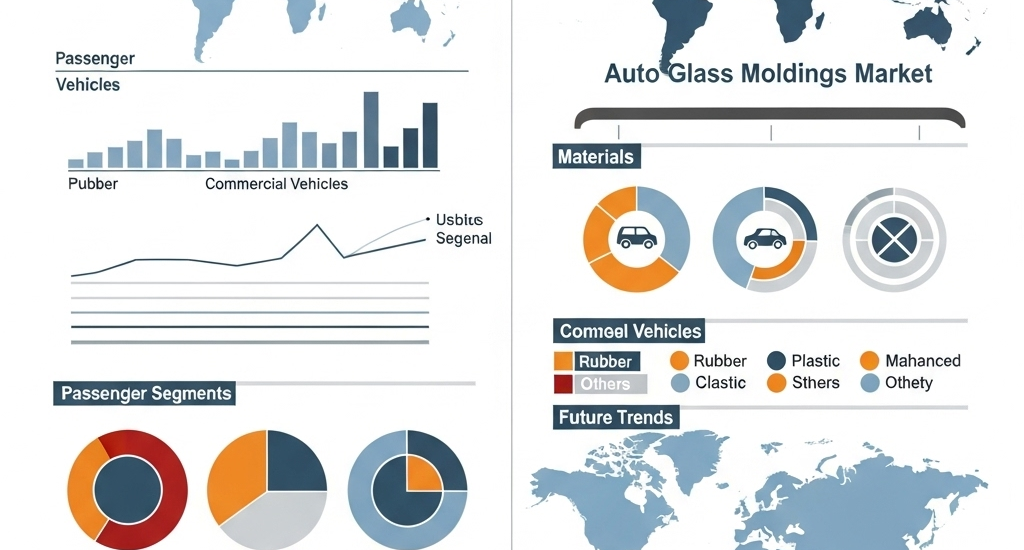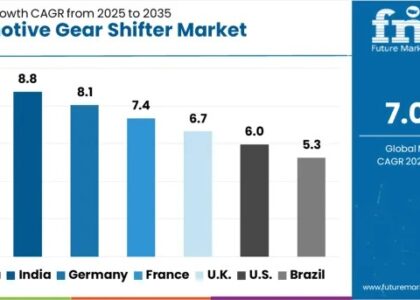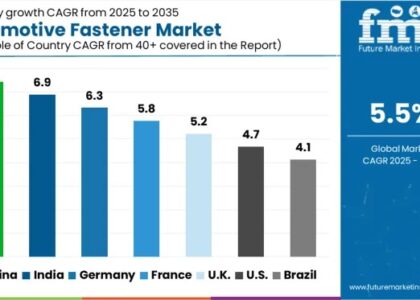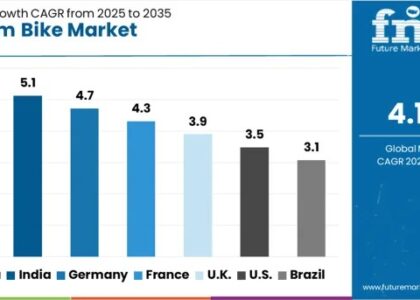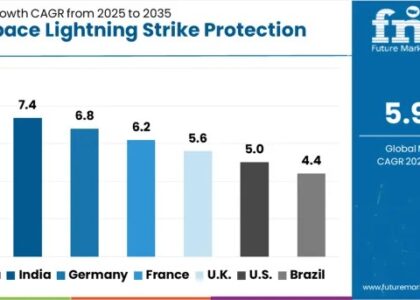The auto glass moldings market is projected to grow from USD 3.8 billion in 2025 to USD 5.8 billion by 2035, registering a CAGR of 4.4% over the forecast period. Growth in the market is expected to be sustained by the increasing volume of vehicle production, rising replacement rates for damaged windshields, and greater demand for aerodynamic designs that require precision sealing solutions. Asia Pacific remains the dominant production hub, while North America and Europe continue to lead in aftersales demand.
In the rapidly evolving automotive landscape, where digital dashboards, aerodynamic exteriors, and safety innovations dominate attention, one component quietly performs a crucial role—auto glass moldings. Often overlooked, these trim pieces serve as a critical interface between the glass and vehicle frame, ensuring not only a clean aesthetic but also structural integrity, weatherproofing, and noise insulation.
As vehicle design trends shift toward panoramic roofs, frameless doors, and advanced driver-assistance systems (ADAS), the role of auto glass moldings is becoming more complex—and more essential than ever.
Get Ahead with Our Report: Request Your Sample Now!
https://www.futuremarketinsights.com/reports/sample/rep-gb-22378
Beyond Aesthetics: The Functional Backbone of Glass Installation
Auto glass moldings are precision-engineered to create a tight seal between the vehicle body and glass components such as windshields, rear windows, and side windows. These moldings help prevent water leaks, block dust and debris, and minimize wind noise at high speeds.
More than just weatherstrips, they serve as structural elements that absorb vibrations and maintain the correct alignment of the glass—supporting visibility, comfort, and safety in all driving conditions.
Adapting to New Glass Technologies and Vehicle Designs
Modern vehicles are incorporating larger, more complex glass surfaces—including curved windshields, wraparound rear windows, and panoramic sunroofs. These innovations demand moldings that can flex, stretch, and conform without compromising seal performance or visual uniformity.
Additionally, the integration of cameras, sensors, and heads-up displays into windshields is increasing the importance of precision fitment. Moldings now support these embedded technologies by ensuring optical clarity and proper sensor alignment—playing a vital role in enabling ADAS features like lane-keeping, collision warning, and automatic emergency braking.
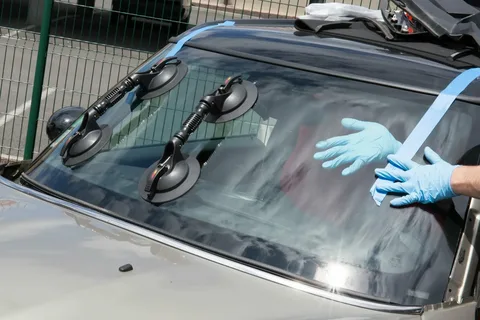
Materials Matter: Balancing Durability and Flexibility
Today’s auto glass moldings are manufactured using advanced materials such as EPDM (ethylene propylene diene monomer) rubber, thermoplastic elastomers (TPE), and polyurethane blends. These materials offer high resistance to UV rays, temperature extremes, and chemical exposure—all while maintaining the flexibility needed to adapt to intricate vehicle contours.
As lightweighting becomes a design imperative for fuel efficiency and EV range optimization, manufacturers are turning to materials that reduce overall weight without sacrificing durability or performance.
Driving Comfort and Quiet Through NVH Management
Noise, vibration, and harshness (NVH) reduction is a key metric for modern automotive design, particularly in electric vehicles where traditional engine noise is absent. Auto glass moldings contribute significantly by dampening exterior sound, reducing rattles, and enhancing cabin quietness.
Premium moldings are engineered with dual-lip seals, sponge cores, and aerodynamic profiles that improve acoustic performance and minimize wind buffeting—even at high speeds.
Challenges in Precision, Compatibility, and Sustainability
Despite their compact form, auto glass moldings must meet exacting standards for fitment and performance. Variability in windshield shapes across vehicle models, as well as evolving installation techniques such as bonded glass systems, demand tight tolerances and seamless integration with adhesives.
Sustainability is also gaining attention. As automotive OEMs strive to reduce their environmental footprint, there is increasing interest in recyclable materials, bio-based polymers, and cleaner manufacturing processes for moldings.
Thorough Market Evaluation: Full Report
https://www.futuremarketinsights.com/reports/auto-glass-moldings-market
Supporting the Shift to Electrification and Autonomy
Electric and autonomous vehicles bring new design freedom—and new challenges—for auto glass moldings. Frameless doors, flush glazing, and vehicle architectures that minimize physical controls all require moldings that support advanced sealing and aerodynamic needs.
Moreover, as sensors and LiDAR units become more integrated with exterior surfaces, moldings are being reimagined as multifunctional components that support both form and function—enabling the sleek, seamless look of future mobility.
Small Component, Big Impact
While rarely in the spotlight, auto glass moldings play a foundational role in the vehicle’s overall performance, safety, and design integrity. They ensure clear visibility, quiet rides, weather protection, and the seamless function of safety-critical systems.
As automotive design pushes boundaries and mobility trends accelerate, auto glass moldings are adapting to support the future—sealing the edges of innovation, quite literally. Compact but critical, these components remind us that in the world of automotive engineering, even the smallest details drive the biggest advancements.


